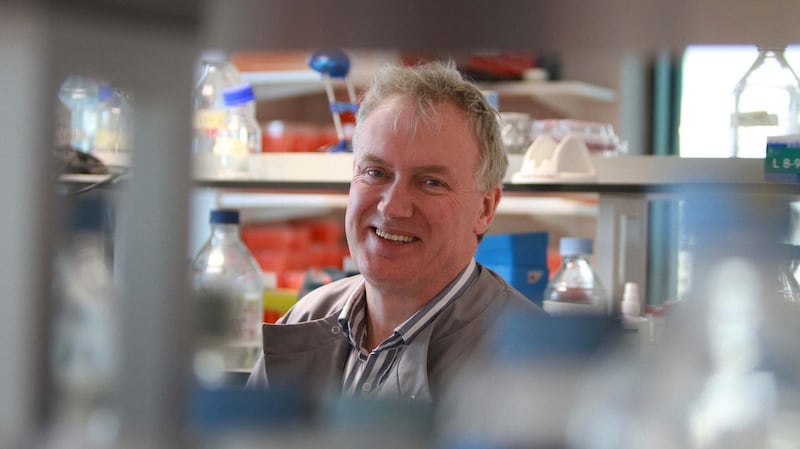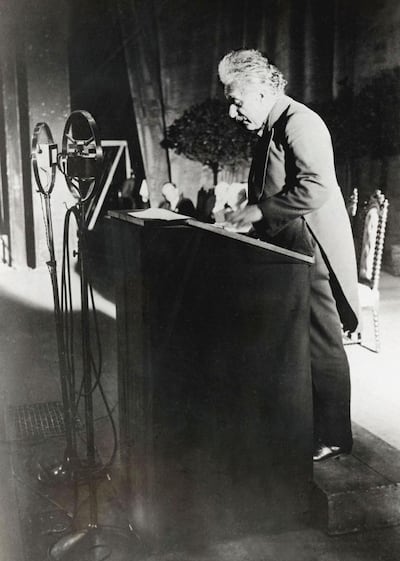The Solvay Conference of 1927 brought together in Brussels the greatest group of physicists ever assembled.
It was notable for the presence of “the grand old men of the first quantum revolution” – Einstein, Planck and Bohr – and “the young men of the second quantum revolution” – de Broglie, Dirac, Heisenberg and Pauli – as noted by the science writer John Gribbin. Marie Curie was the lone woman. All were big hitters, whose names still pepper any decent undergraduate physics textbook of today.
There too, conspicuous in his casual jacket and bow tie, was Erwin Schrödinger, “who was at once both a grand old man (as physicists judge age) and a key player in the second quantum revolution.” When older than the trailblazing theoretical physicists of the early 20th century, the Austrian developed a number of fundamental results in the field of quantum theory which formed the basis of wave mechanics, of which it was said: “There is nothing more beautiful in theoretical physics.”
In 1933 he was awarded a Nobel Prize. A decade later, a remarkable event took place in Trinity College Dublin: Schrödinger, brought to Ireland by Éamon de Valera in 1939 to be the first director of theoretical physics at the new Dublin Institute for Advanced Studies, gave three public lectures, entitled What is Life?
He referred to an “aperiodic crystal” to describe what genes are made of, and spoke on the thermodynamics of living systems. The basic question posed was: How can the events in space and time which take place within the boundary of a living cell be accounted for by physics and chemistry?
Published
They were published in 1944 as a book of the same name. "In many ways, the astonishing success of molecular biology over the past 65 years can be traced to these lectures," says TCD immunologist Prof Luke O'Neill, one of the organisers of Schrödinger at 75 – The Future of Biology, taking place in Dublin this month.
"Without What is Life? it's highly likely that such luminaries as Francis Crick, James Watson, Maurice Wilkins and Rosalind Franklin, who discovered the double-helical nature of DNA that explained so much about life, would not have entered the field," O'Neill says. Crick attributed their inspiration to Schrödinger's "little book".

Schrödinger biographer Walter Moore had no doubt molecular biology would have developed without What is Life? but it would have been at a slower pace, and without some of its brightest stars. "There is no other instance in the history of science in which a short, semi-popular book catalysed the future development of a great field of research."
The September event marks the 75th anniversary of the What is Life? lectures with an unprecedented gathering of some of the most brilliant minds working in biology today. It includes six Nobel laureates, who will seek to recapture the spirit of Schrödinger's original lectures by giving their personal views on the future of biology.
“When Schrödinger gave his lectures, the urgent, unsolved questions were the basis for heredity – DNA had yet to be identified as the genetic material – and how living systems defy entropy [the physical laws of disorder or randomness],” O’Neill explains.
Burning issues
Speakers have been given a clear brief to address burning issues. They stretch across the basis of the mind and consciousness: memory, emotion, sensation, ageing, gene and brain editing, synthetic biology, AI, extinction and the origin of life. Schrödinger would have approved: the breadth of topics touch on many of his interests, which were never confined to physics.
In one sense, it mimics Solvay 1927 but with a broader mandate – a focus on the key frontiers in biology infused by chemistry and physics.

The conference is unprecedented in terms of the list of speakers, O’Neill believes. “We have gathered together some of the brightest scientific minds working on some of the biggest questions in science. We hope that Dublin will again be remembered for new ideas that shape future work on that most important of questions: what is life?”
TCD neuroscientist Prof Tomás Ryan says speakers have been told not to talk about their latest research paper or technique, but to look at the bigger picture. Even if only some participants do this, he sees potential for a remarkable outcome. Up to nine of the world’s most eminent neuroscientists – “not the usual conference buddies” – will be a room together, which has never been achieved.
What’s more, in a compliment to Schrödinger’s great powers of science communication, they have to outline how they see the unfolding world to a general audience – “almost Ted Talk-like” – and not just to colleagues, as was the Solvay approach.
In his book Mind and Matter, Schrödinger expands on his speculations on the nature of consciousness and free will that permeated What is Life? "Like countless scientists before and after him, Schrödinger wrestled with the nature of mind and its place in the material world," Ryan notes.
Struggle
This struggle is illustrated by Schrödinger's question from What is Life?: "Why should an organ like our brain, with the sensorial system attached to it, of necessity consist of an enormous number of atoms, in order that its physically changing state should be in close and intimate correspondence with a highly developed thought?"
Today, we understand much of the physical basis of life. “We understand the universal genetic code that governs the programming of all life on Earth through DNA, and it is now trivial to sequence the whole genome of any species on the planet,” Ryan says.
We do not understand how to adequately treat, or even explain, brain disorders ranging from Alzheimer's disease to schizophrenia
These triumphs of genetics and molecular biology have yet to be paralleled by brain and cognitive sciences. “We do not understand how conscious animals evolved from non-conscious organisms. We do not understand how our brains store information. We do not understand how brain activity leads to a conscious human mind with language, thoughts and feelings.
“We do not understand how to adequately treat, or even explain, brain disorders ranging from Alzheimer’s disease to schizophrenia. We do not understand how to effectively manage the behaviour of our own species in order to maximise our chances of survival and positive mental health in the human population.”
That is why half the speakers at Schrödinger 75 are neuroscientists. The programme hinges around the What is Life? lecture to be delivered by renowned philosopher Daniel Dennett, who will present his vision for the Future of Life. His works have drawn on virtually all fields of biology to produce a coherent and scientifically-grounded account of consciousness.
“Much like Schrödinger, Dennett is adept at blending ideas from disparate fields and sub-fields of science, philosophy and engineering,” Ryan says.
What would Schrödinger think of biology if he was alive in 2018? Ryan is struck by his remark: “Next to want, boredom has become the worst scourge in our lives.”
No one can tell us what Schrödinger would have thought of the revolution in biology he started, Ryan suggests. “No one can actually say how Schrödinger’s views on the philosophy and science of mind might have changed in light of current data. But one thing seems fairly certain – he would not be bored.”









